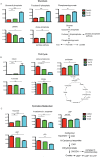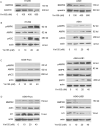Ym155 localizes to the mitochondria leading to mitochondria dysfunction and activation of AMPK that inhibits BMP signaling in lung cancer cells
- PMID: 35908087
- PMCID: PMC9338953
- DOI: 10.1038/s41598-022-17446-y
Ym155 localizes to the mitochondria leading to mitochondria dysfunction and activation of AMPK that inhibits BMP signaling in lung cancer cells
Abstract
The imidazolium compound Ym155 was first reported to be a survivin inhibitor. Ym155 potently induces cell death of many types of cancer cells in preclinical studies. However, in phase II clinical trials Ym155 failed to demonstrate a significant benefit. Studies have suggested that the cytotoxic effects of Ym155 in cancer cells are not mediated by the inhibition of survivin. Understanding the mechanism by which Ym155 induces cell death would provide important insight how to improve its efficacy as a cancer therapeutic. We demonstrate a novel mechanism by which Ym155 induces cell death by localizing to the mitochondria causing mitochondrial dysfunction. Our studies suggest that Ym155 binds mitochondrial DNA leading to a decrease in oxidative phosphorylation, decrease in TCA cycle intermediates, and an increase in mitochondrial permeability. Furthermore, we show that mitochondrial stress induced by Ym155 and other mitochondrial inhibitors activates AMP-activated kinase leading to the downregulation to bone morphogenetic protein (BMP) signaling. We provide first evidence that Ym155 initiates cell death by disrupting mitochondrial function.
© 2022. The Author(s).
Conflict of interest statement
The authors declare no competing interests.
Figures








References
Publication types
MeSH terms
Substances
Grants and funding
LinkOut - more resources
Full Text Sources
Medical

